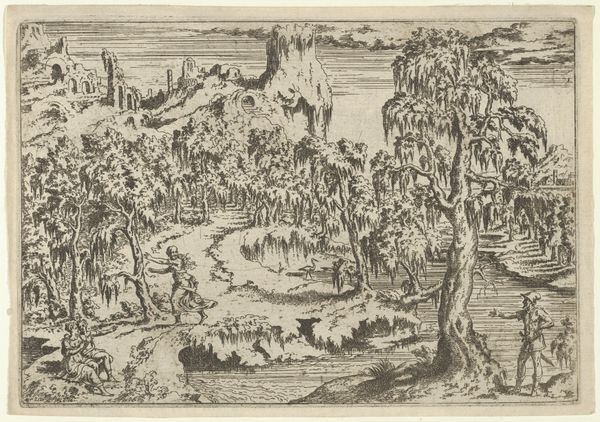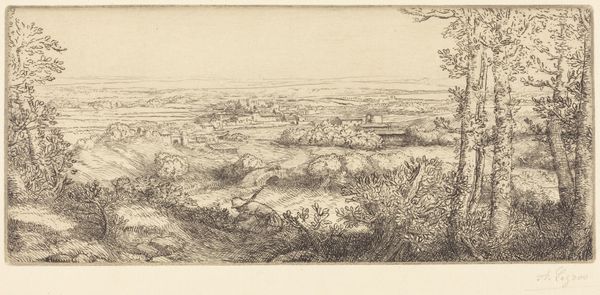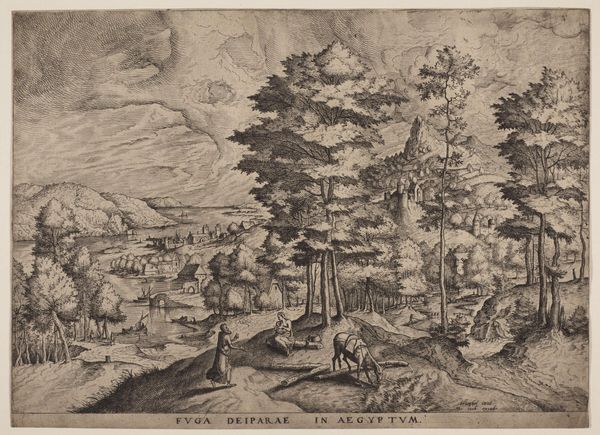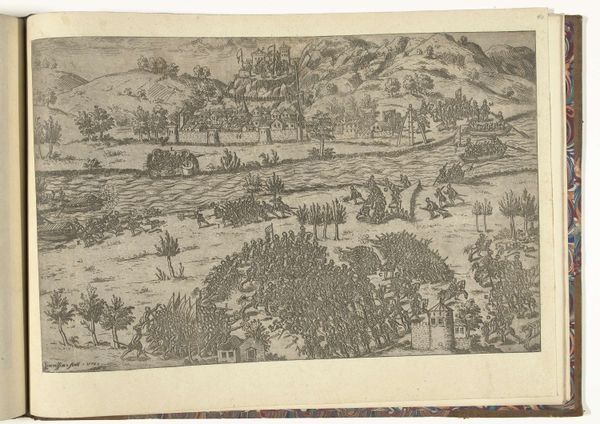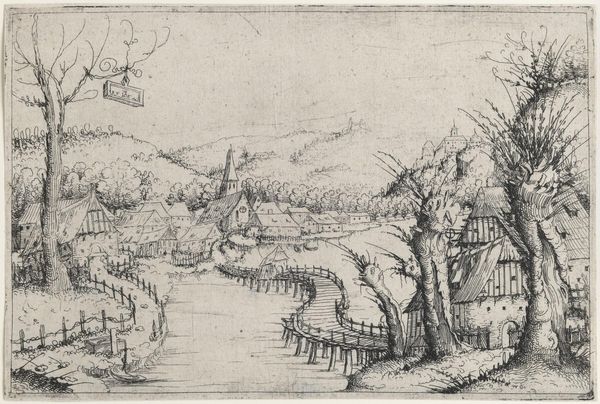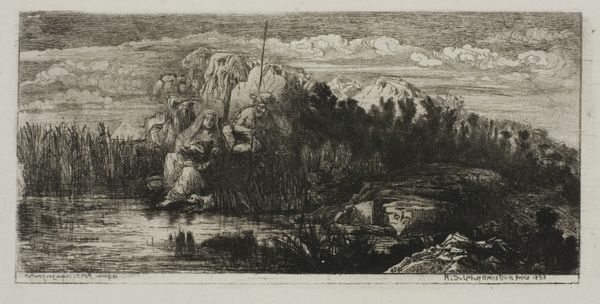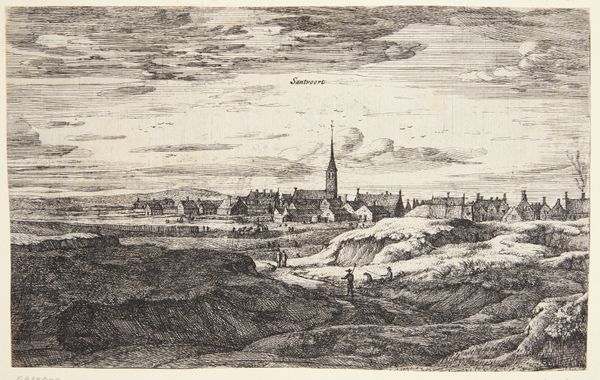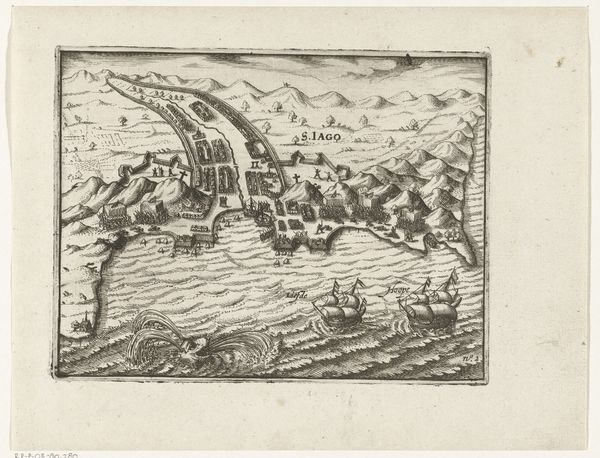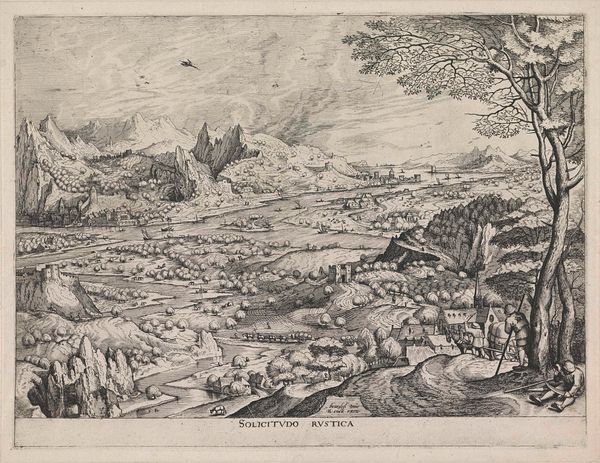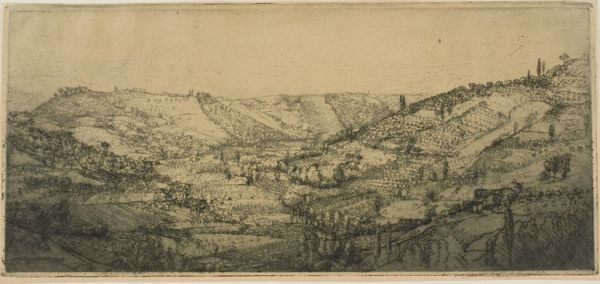
Landscape with a Tree in Center of Foreground 1545
0:00
0:00
drawing, print, etching, paper, ink, engraving
#
pen and ink
#
drawing
#
ink drawing
#
medieval
# print
#
etching
#
landscape
#
paper
#
ink
#
engraving
Dimensions: 99 × 251 mm
Copyright: Public Domain
Curator: Augustin Hirschvogel's "Landscape with a Tree in Center of Foreground," created around 1545, invites us to consider the evolving visual language of landscape art through the intricate dance of etching, engraving, and ink on paper. What strikes you first about it? Editor: Immediately, the almost clinical precision of the lines. It's a highly structured composition; that dominant tree anchors everything, dividing the scene into carefully balanced halves. The density of the lines also builds this impressive aerial perspective, pushing the eye deep into the landscape. Curator: It’s fascinating how Hirschvogel blends artistic vision with the burgeoning scientific interest in mapping and topography. The meticulous detail he employs arguably mirrors the evolving need to survey and control the physical world during that period. How might we interpret this landscape as an assertion of human dominance over nature, or perhaps, a harmonious integration within it? Editor: Interesting you say that; I almost read it the other way. Despite the detail, there's an ethereal quality, a sense of transience, evoked by the fragility of the etching itself. That single, bare tree, dominating the center, feels more like a vulnerable monument than a symbol of strength, no? Curator: That vulnerability resonates powerfully. Given the religious and political turmoil of the 16th century, might this landscape also represent a yearning for stability, for a sanctuary amidst upheaval? The faint inscription at the top feels laden with implications; its source text points to a narrative of abrupt and imposed change. Editor: That interplay between meticulous detail and this… whisper of the ethereal, it truly elevates the image. The almost obsessive rendering of foliage and architecture creates a tangible world, yes, but one perpetually on the verge of dissolving, receding into memory or imagination. It reminds one of early cartography with the illustrative depiction of new worlds, or newly understood lands. Curator: Precisely! Hirschvogel gives us more than just a picture, or even the suggestion of a map. He presents a space for contemplation on faith, power, and the enduring presence of nature. Editor: It’s a testament to the enduring power of line, isn't it? Curator: A beautiful intersection between science, faith, and the subtle revolution taking shape in art history!
Comments
No comments
Be the first to comment and join the conversation on the ultimate creative platform.
